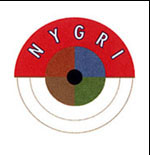| Brand name |
Generic name |
Indication |
Reported Ocular Side Effects |
| Tagamet |
cimetidine |
ulcers |
Uncommon, but can include transient myopia, perception of yellow or pink
tinge to objects, and dry eye symptoms. There have been isolated reports of angle closure
glaucoma and visual hallucinations. |
| Tegretol |
carbamazepine |
epilepsy |
Diplopia, blurry vision, a "heavy feeling in the eyes." Effects
are most common when dosage exceeds 1.2g. About a fourth of all patients develop
neurologic or hematopoietic reactions; the former can lead to ocular effects such as
downbeat nystagmus. |
| Tenormin/Tenoretic |
atenolol |
hyperten-sion, angina, myocardial infarction |
Beta blockers can cause visual disturbances and vivid hallucinations and
increase migrainous scotomata. They can worsen myasthenia gravis and occasionally cause
extraocular paresis and diplopia. They can decrease tear secretion. |
| Toprol XL |
metoprolol succinate |
hyperten-sion, angina |
This is a new drug, but other beta blockers have caused visual
disturbances and vivid hallucinations, worsened myasthenia gravis, decreased tear
secretion and decreased intraocular pressure. |
| Transderm-nitro |
nitroglycerin |
angina |
Uncommon. Theoretically has potential to precipitate angle-closure
glaucoma. |
| Unasyn |
ampicillin, sulbactam |
infection |
May cause allergic skin reactions and unmask or aggravate the symptoms of
myasthenia gravis. |
| Vasotec/ Vaseretic |
enalapril |
hyperten-sion, heart failure, left ventricular dysfunction |
Rare, seldom clinically significant. The most common side effect may be
angioneurotic edema around the eyes, typically occurring within three weeks after starting
the drug. All reactions are reversible with discontinued drug use. |
| Ventolin |
albuterol sulfate |
asthma |
Seldom clinically significant. Rarely, patients may experience vivid
hallucinations. |
| Versed |
midazolam |
anesthesia |
Side effects from benzodiazepine derivatives are rare, but the drugs can
cause decreased corneal reflex, decreased depth perception and abnormal extraocular muscle
movement. Can cause a temporary allergic conjunctivitis and may cause pupillary dilatation
leading to the isolated narrow-angle attack. |
| Xanax |
alprazolam |
anxiety |
Side effects from benzodiazepine derivatives are rare, but the drugs can
cause decreased corneal reflex, decreased depth perception and abnormal extraocular muscle
movement. Can cause a temporary allergic conjunctivitis and may cause pupillary dilatation
leading to the isolated narrow-angle attack. |
| Zantac |
rantidine |
ulcers |
Uncommon; typically occur only in young children or severely ill elderly
patients. Can include decreased vision, erythema, conjunctivitis, angioneurotic edema and
urticaria of the lids and conjunctiva, hallucinations, color vision defects and
subconjunctival or retinal hemorrhages secondary to drug-induced anemia |
| Zovirax |
acyclovir |
herpes |
Rare. May cause periocular edema. May increase ocular irritation in
keratoconjunctivitis sicca patients. |











